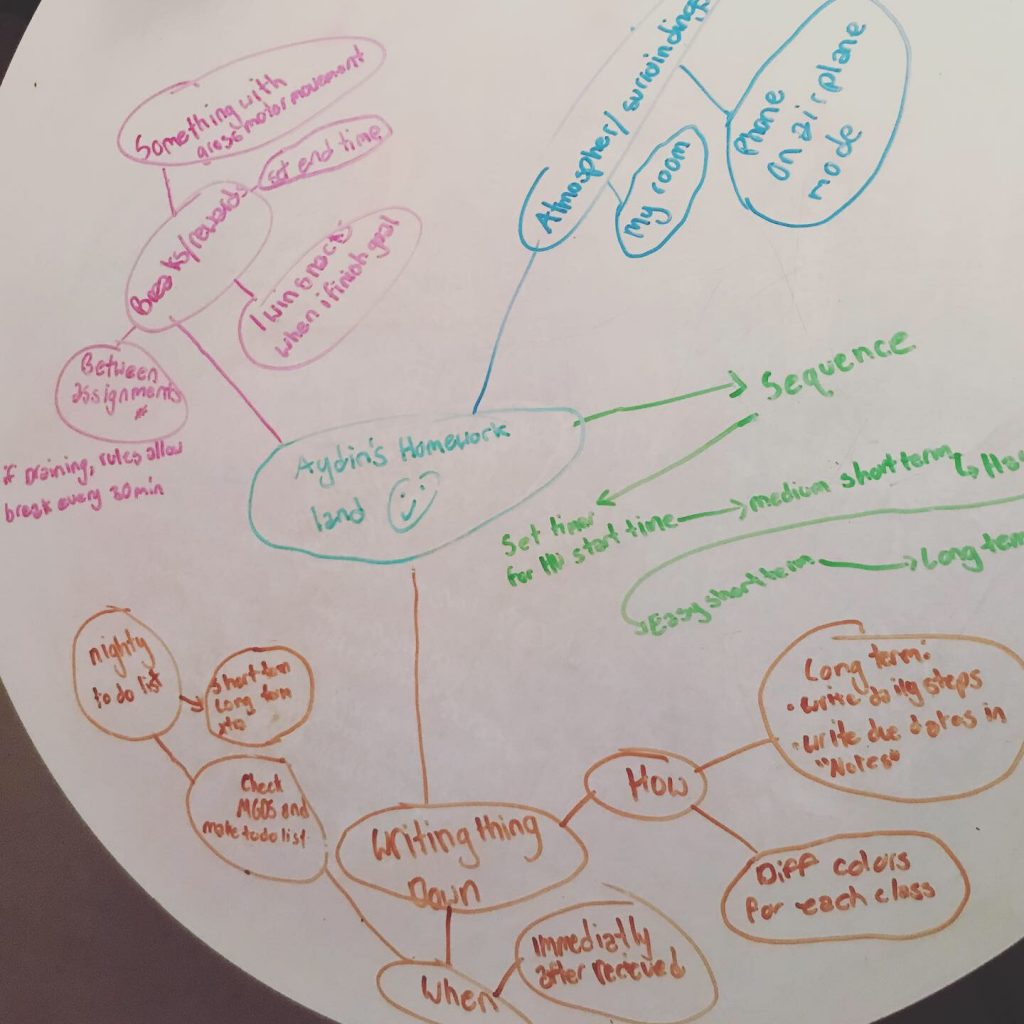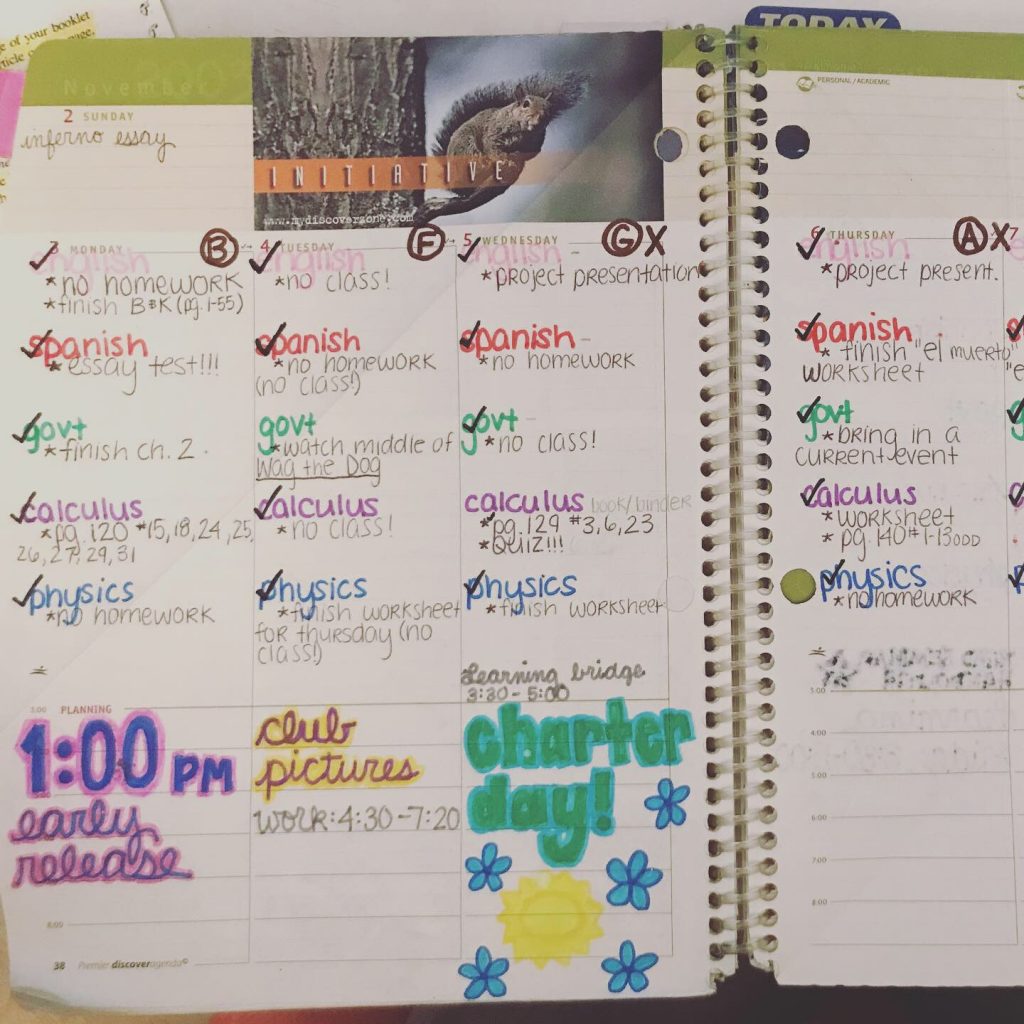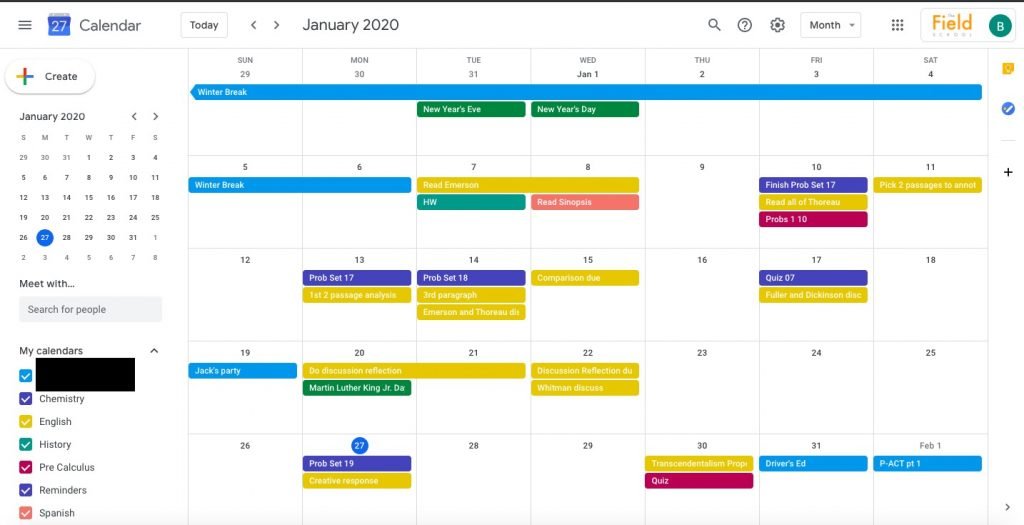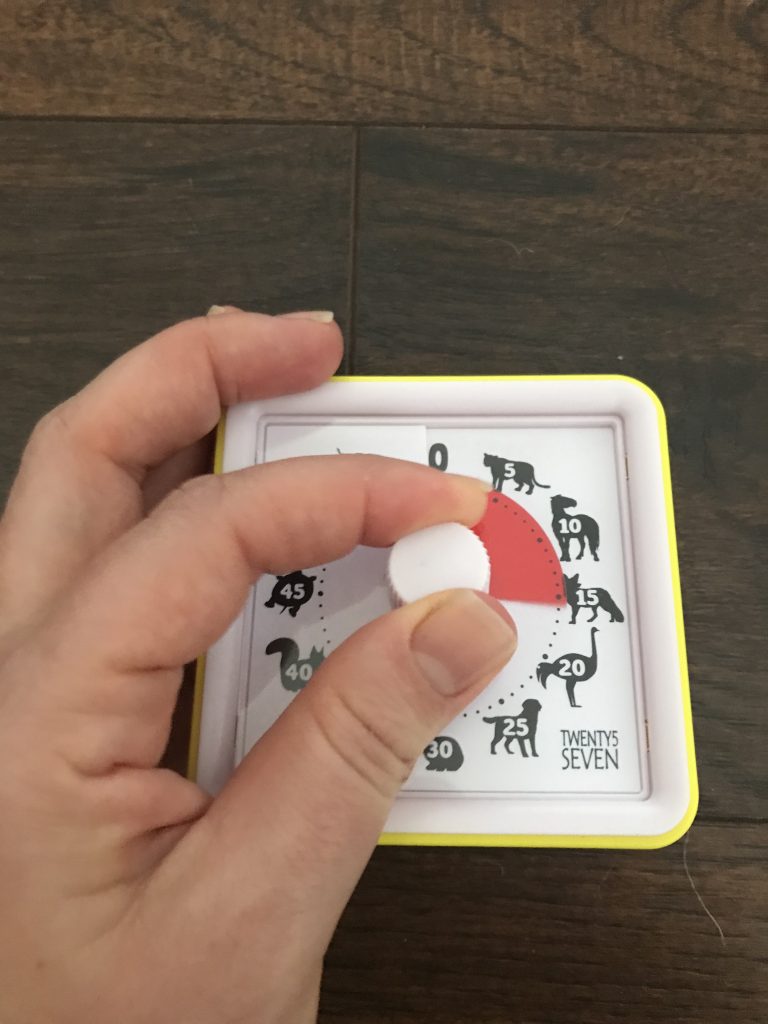We work with students who are incredibly bright and have many interesting ideas to share, but are frustrated because their grades just don’t reflect their true capabilities. Sometimes, that comes down to underdeveloped executive functioning skills, which we like to explain to our students as the manager or CEO of our brain. We need these skills to plan, organize, and keep track of everything we do. Without them, you could have an abundance of knowledge and ideas, but no ability to share or enact them. Sounds frustrating, right? For many of our junior high and high school students, particularly those with executive functioning difficulties, homework is a problem. The underlying reasons and the specific homework issues vary; therefore, the support they need varies as well.
The process of helping a student identify specific homework issues, and then create, implement, evaluate, and modify a plan is highly individualized, so there’s no one “program” to follow; however, in this blog post we are going to share some of the common problems we address and a few tips and tricks that work for many of our students. We hope this helps you, as parents and teachers, by giving you some ideas for ways to help your children and students troubleshoot their homework issues.
GETTING STARTED
As a general tip, our homework troubleshooting sessions involve a lot of discussion and visual mapping. We must not only identify the exact underlying problems, but also discuss viable solutions, which will vary based on each student’s strengths and needs as well as their particular home/after-school schedule.
Mapping things out helps our students by making the concepts we are discussing more concrete. Visual mapping also allows them to more easily grasp the options for their solutions as well as keep track of the solutions they decide to try out.
While we will present many different solutions in this blog post, we typically have our students only try out two or three at a time, maximum, so as not to overwhelm them. Our students often play an active role in deciding which solutions they want to try out first.

Keep reading to find out the most common problem areas we tackle with our students in need of homework help, as well as some our favorite techniques!
KEEPING TRACK OF HOMEWORK
This is one of the first problems we often tackle. Many students need help creating and implementing a structured routine to help them keep track of their assignments. You might be surprised at how often we hear that our student’s solution to keeping track of their homework involves relying on themself to “just remember.”
Think of your brain as an internet browser!
One analogy we often use when having this discussion is to think of your brain like your internet browser. When you have too many tabs open, your computer might be sluggish and will generally be less effective at doing what you would like it to do. The same thing happens with our brains. When we have too many tabs open, things don’t work as well. When our students have “too many tabs open,” this often manifests as forgetting assignments, procrastinating, and/or feeling overwhelmed, anxious, and fatigued. While they make a valid point that it is possible to remember an assignment without writing it down, students often have many assignments and other obligations to remember, not to mention other things going on in their lives that require them to “open tabs.” Because of this, we make the point that they should take any opportunity to “close a tab” when they can. This is not about whether or not they are capable of remembering something, but instead about giving their brain a rest by writing things down when they can, rather than unnecessarily giving their brain yet another thing to do.
When, & how to write things down
For starters, our students often rely too heavily on their school’s internet-based homework system, which is helpful, but not meant to be their sole method of keeping track of their schoolwork. Often, these systems are unreliable, and students typically benefit from adding in a better visual representation of their “to dos.” Additionally, when it comes down to it, being able to keep track of our work is a necessary life skill, and relying on an online homework system does not accomplish that.
When enhancing this skill, we often have to develop a routine surrounding when a student writes homework down. Typically, the solution we land on is to write it down right when they receive it in class, with no exceptions. Another solution we often add in is to check their planner against the online system as soon as they get home each day. At this point, they make any necessary updates to their planner or add details if needed.
Another issue with writing homework down is how to do it effectively. Particularly when they have long-term assignments, our students don’t have an effective way of keeping track of them. Because of this, they can’t plan out their time to work ahead and tackle the assignment in bits and pieces. We discuss strategies such as writing in the assignment on the due date and then drawing an arrow from the date it was assigned until the due date. We also work on how they can break the assignment down into more manageable steps and write in their planner specific goals they want to accomplish on each day. It is helpful to have milestone-based goals rather than setting time-based goals (e.g., “work on it for 15 minutes”). This gives our students something concrete to focus on to avoid working aimlessly for an arbitrary amount of time. We often have to spend additional time here giving our students skills and strategies for breaking assignments down into steps (i.e., utilizing the directions, identifying the explicit and implied steps, and developing a plan to complete each step systematically).

Planners & Google Calendar
At this point we also talk about our student’s mechanism for keeping track of the assignments. Often, a planner the best method; however, even within the realm of a planner, there are many types and styles to choose from. Some students who are older and more technologically savvy find online tools such as Google Calendar to be helpful. When implementing online tools and apps, it’s important to help the students train with the tool and troubleshoot with support to avoid them getting frustrated and giving up on it when the inevitable problems arise. When training a student on Google Calendar, we show them how to create a different calendar for each class and each calendar is given a different color. This color-coding system helps them to fully visualize their portfolio of work and progress toward its completion quickly and easily. We also train them on how to create assignments which span across multiple days, how to move assignments around, how to create events that occur at specific times, and even how to have Google Calendar send reminders to them at pre-specified times. The level at which a student utilizes tools such as Google Calendar depends on their abilities and needs. While Google calendar can be helpful, most students will need a planner and will need help learning how to use it in a way that is useful for them. They will need support to use their planner to help them keep track of assignments (both immediate and long-term) as well additional miscellanea that arise (e.g., meetings or needing to send emails to teachers, coaches, or peers).

Nightly To-Do Lists
Creating what we call a “Nightly To-Do List” is one of our favorite strategies to throw in the mix. While this does take an additional moment on top of writing in their planner, once they give it a shot, many students realize that it’s worth it. In addition to helping them keep track of what needs to be done that night, it helps them gather their thoughts so that they are more clearheaded and prepared to easily initiate their homework each night. To create a Nightly To-Do List, each afternoon, the student creates a new list of what they must and would like to accomplish that evening. They can use a specified To-Do List notepad (we love these) or something as simple as a scrap of paper or post-it. We encourage the student to start with the assignments that they must do that night. Next, they look ahead at long-term assignments and add to their list any steps they want to complete that night. They can then add extracurriculars such as practicing an instrument or sport. This technique is simple and effective!
HOMEWORK APPROACH
Our main action items regarding homework approach include creating a purposeful homework sequence and developing break/reward systems.
Homework sequence
When tackling homework sequence, we want to make sure that students aren’t completely burnt out by the time they get to the most difficult assignments, while we also want to ensure that they don’t put off initiating homework because they are dreading getting started with something that is too difficult. What many students often land on is starting with a homework assignment that is in the “medium” level of difficulty. Then, after they’re warmed up, they’re ready to move on to the most difficult assignment they have that evening, and then gradually work their way down to the easiest assignment.
Breaks and rewards
We also work on setting up systems for breaks and rewards. In general, breaks should involve gross motor movement if possible (e.g., going for a walk, playing with a pet, doing exercises, walking to the kitchen and back for a snack). They should not involve screentime (e.g., YouTube videos, playing video games, or socializing on their phones). Breaks should also have a pre-specified end time, whether it is a natural ending of the activity (e.g., walking one loop around the block) or using a timer to set a time limit. The exact type of break will vary based on the individual. We help our students determine what type of break will allow them to rest yet stay focused. We also help them set up reward systems, including when to give themself rewards as well as what kind of rewards to give. Again this will depend on the student, but rewards may be based on accomplishing a certain number of assignments or staying focused for a certain period of time. Time timers can be particularly useful for this so that the student can set a time goal for themself and have an easy-to-see visual of how much time is left.

HOMEWORK ATMOSPHERE
Finally, homework atmosphere is a big piece of our homework-based therapy. Many students need to work on finding the appropriate place to conduct their homework as well as what can and cannot be around them. We help our students determine a place in which they are able to work quietly, with minimal distractions, even if this includes removing their beloved phone from the room. Once our therapy has reached this point, our students are often more aware of what is and isn’t helpful for them, and the idea of removing the phone distraction, at least for specific periods of time, is more readily accepted. It’s also useful for our students to have a homework environment with enough space for them to move things around. Gross motor movement, especially for our students with ADHD, can be helpful in establishing and maintaining focus. Even simply being able to spread out and physically move their papers and school items around in the space is often useful. Another consideration we commonly discuss is music or background noise. Many students enjoy listening to music while they work, and we often discuss what types of music and sounds may be helpful versus harmful. We have already written a blog post on this topic so feel free to check it out here to learn more about the research behind using music effectively while completing homework.
This covers some of the most common and important issues and solutions when addressing homework with students. If you feel like your children or students may benefit from some of these techniques, we would be happy to chat further. As always, let us know how we can help!
